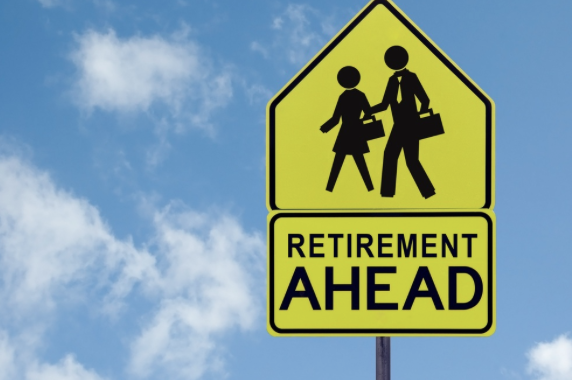Article provided by, Rob Williams of Charles Schwab. William focuses on fixed income and income-planning issues, including key topics of interest to individual investors seeking to increase income from their portfolios.
Knowing how much to save for retirement is a challenge. And it should go without saying that if you’re not sure how much you’ll need tomorrow, then you can’t really know for sure if you’re setting enough aside today.
Unfortunately, for many Americans the answer is clearly “not enough.” A report by the U.S. Government Accountability Office found that nearly a third of households aged 55 or older had no retirement savings at all.1 While that’s discouraging, it shouldn’t be cause for despair. Successfully saving for retirement is within most people’s reach—but it does require financial discipline and periodic checkups along the way.
To give readers a better understanding of their finances, we’ve developed the equivalent of savings milestones you can use to see how your current savings stack up against your retirement goals. We also offer suggestions for making up for any shortcomings.
What does the “average couple” need to retire?
Everyone has different expectations for retirement, but we can still apply some basic rules of thumb for working out how much you might need to save. One approach is to assume you’ll simply maintain the same lifestyle in retirement that you had while working. That doesn’t mean you’ll also need to maintain your current annual salary, though.
Imagine a married couple earning $70,000 a year—which is about average for a married household, according to Census Bureau data—that wants to retire at 65 and afford the same life that they had while working. To work out what they’ll need in retirement, they would start with their $70,000 of current income and then subtract whatever they are saving each year for retirement, as well as whatever they pay in payroll taxes, since they’ll no longer have to do either once they actually retire. If we assume they save $5,000 a year and pay an equal amount in payroll taxes, that would mean they could continue their current lifestyle with $60,000 a year.
Next, they should subtract their Social Security benefit. The average annual benefit for a couple like this comes out to about $25,000, according to Social Security Administration data. If we assume they won’t receive any other income in retirement, then their nest egg would have to generate about $35,000 (or $60,000–$25,000) of income each year for this couple to maintain their current lifestyle.
How do you determine if you’re on track?
Once you have an idea about how much income you’ll need each year to pay for retirement, you can measure how your current savings compare—which can help you decide whether you need to do more. The calculations are a little complex, so we’ve created a table showing the different “multipliers” you can use to work out where your savings portfolio should be at a given age.
We’ll use our couple from the example above again. We know they want a nest egg that can generate $35,000 of annual income when they retire at 65 and are currently setting aside $5,000 a year. Using the multiplier in the table, we can work out how much they theoretically should have saved by a particular age if they want to hit their goal.
We start with their annual savings rate and then compare that with their age. As you can see, a couple saving $5,000 a year (outlined in green) at age 40 should multiply their annual income target by 7.5. That gives us a portfolio value of $262,500 (or $35,000*7.5). In other words, if they’ve already saved $262,500 by age 40, then they should be on course to hit their target, assuming they continue to save $5,000 adjusted for inflation annually.
At age 50, they will need to have saved $423,500 ($35,000*12.1), and so on.
Source: Schwab Center for Financial Research. This is a hypothetical example for illustrative purposes only. The table illustrates the required portfolio size as a multiple of the retirement income need at 65 for a 30-year retirement with a 75% confidence level based on current age and annual savings rate. Confidence level is defined as the number of times the portfolio taking withdrawals ended with a balance greater than zero. Annual savings increase by a constant 1.93%. Assumes an aggressive asset allocation (6.7% annual return) from age 30 to 40, a moderately aggressive asset allocation (6.1% annual return) from age 40 to 50, and a moderate asset allocation (5.3% annual return) for age 50+.
What can you do now?
If you’re saving regularly and on track for what you think you’ll need in retirement, congratulations. If not, you can still take a few steps to get back on track:
1. Increase your savings now. Albert Einstein is said to have called compound interest “the most powerful force in the universe.” There’s no way around the math. Unfortunately, it doesn’t get easier as you age. Every $100 saved at 30 has the potential to generate $34 annually in retirement. Every $100 saved at 50 has the potential to generate $10 annually in retirement. If you don’t save enough when time is on your side, you should consider doing more later to make up the difference.
Source: Schwab Center for Financial Research. This is a hypothetical example for illustrative purposes only. Assumes you save $100 at a certain age. Potential annual retirement income calculation assumes an initial withdrawal rate of 4.6%— our calculation of the first-year sustainable withdrawal rate for a 30-year retirement from a portfolio with a moderate asset allocation, assuming a 75% confidence level. While saving, we assume an aggressive asset allocation (6.7% annual return) from age 30 to 40, a moderately aggressive asset allocation (6.1% annual return) from age 40 to 50, and a moderate asset allocation (5.3% annual return) for age 50+.
2. Make savings automatic. Why do you brush your teeth every night before bed? Though we all understand the importance of proper dental care, it’s probably because you’ve been doing it from a very early age and it has become a habit. Saving is the same. Regular saving is easier if you set up automatic deposits from your earnings. If your company offers an employer match for any retirement contributions, make sure that you’re contributing at least that amount. Contributing less is like leaving money on the table.
3. Take an appropriate amount of risk. Be sure you are comfortable with the amount of risk you are taking with your investments. Can you stomach a 20% or more decline in a single year or will that cause you to abandon your plan? We generally suggest that investors who are younger should invest more aggressively than older investors. A more aggressive asset allocation has a greater potential to generate higher returns over time. If you have time on your side and are invested conservatively, consider taking on more risk—though obviously not more than you’re comfortable with.
A larger annual return will result in a larger ending portfolio value
Source: Schwab Center for Financial Research. This is a hypothetical example for illustrative purposes only. Assumes a starting portfolio value of $10,000 at 30 and a 35-year investing horizon. Does not assume taxes or fees.
4. Consider how much you really need in retirement. You may want to spend $100,000 in retirement but do you really need to spend $100,000? We think you should break your spending down into expenses that you classify as needs, wants and wishes. If you discover you’re not on track toward hitting your goal, then maybe it’s time to identify some expenses classified as wants or wishes that you could reduce or do without in retirement.
5. Create a more flexible retirement. If your nest egg falls short of what our guidelines suggest, don’t get discouraged. Our calculation is based on a retirement age of 65 and a 30-year retirement. Retiring later could allow you to save more and plan for a shorter retirement. Working longer, or working part-time in a “phased” retirement could also help you to delay starting Social Security, which could increase your eventual benefit. That would also take some of the pressure off your portfolio.
Here at Aquinas Capital Advisors, we can assist you in the retirement planning process. We work with a team of professionals that will assist you every step of the way. If this is something you’ve been meaning to address–give us a call.
1 “Retirement Security: Most Households Approaching Retirement Have Low Savings,” U.S. Government Accountability Office, 5/12/2015.
Important Disclosures
The opinions expressed in post are those of the author and not necessarily the same as those of Aquinas Capital Advisors LLC. Aquinas Capital Advisors LLC did not assist in the preparation of the material and makes no guarantee as to its accuracy or the reliability of the sources used for its preparation.
The information provided here is for general informational purposes only and should not be considered an individualized recommendation or personalized investment advice. The investment strategies mentioned here may not be suitable for everyone. Each investor needs to review an investment strategy for his or her own particular situation before making any investment decision.
All expressions of opinion are subject to change without notice in reaction to shifting market or economic conditions. Data contained herein from third party providers is obtained from what are considered reliable sources. However, its accuracy, completeness or reliability cannot be guaranteed.
Past performance is no guarantee of future results and the opinions presented cannot be viewed as an indicator of future performance.
Examples provided are for illustrative purposes only and not intended to be reflective of results you can expect to achieve.
Diversification strategies do not ensure a profit and do not protect against losses in declining markets.
Investing involves risk including loss of principal.
(0617-7CA1)

